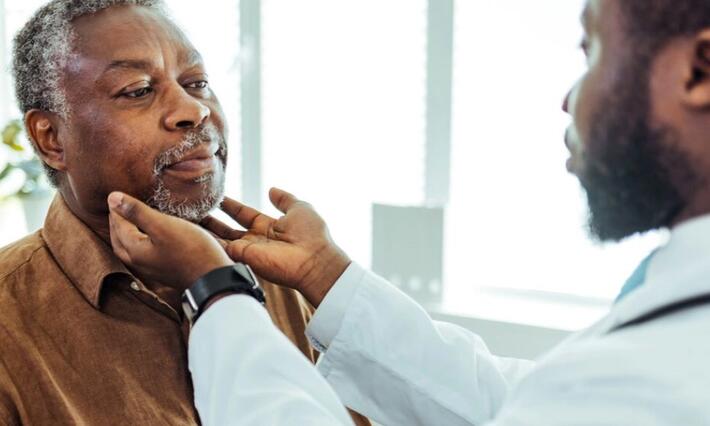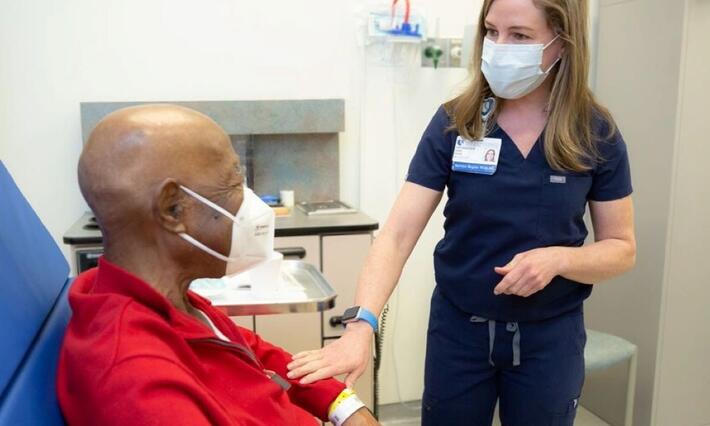In December 2017 Robert Russell brought donuts to the nurses on all three wards of the ninth floor of Duke Medical Center — something he’s been doing regularly for the past three years. He started the tradition because he says it’s the least he can do for those who saw him through the “scariest” couple weeks of his life.
In July 2014, at age 52, Russell was diagnosed by Duke surgical oncologist Ramon Esclamado, MD, with advanced-stage human papilloma virus (HPV) associated squamous cell carcinoma of the oropharynx.
The oropharynx is the middle part of the throat, which includes the soft palate, the base of the tongue, the tonsils, and the side and back wall of the throat.
The first symptoms of oropharynx cancer are typically a lump in the neck, a sore throat and/or ear pain although oropharynx cancer can also be asymptomatic. Physicians say self-awareness and regular visits to the dentist, who does a thorough oral exam, are key to early detection.
Russell had a sore throat and had been coughing up blood for six or seven months by the time he was diagnosed. When his symptoms didn’t go away, following visits to two different primary care physicians, he had asked his wife to look down his throat.
“I think she passed out,” he recounted. “My tonsil was hanging inward and my throat was in bad shape. I went to my ENT doctor the very next day and he said he thought it was cancer, but not bad cancer, and referred me to Duke.”





